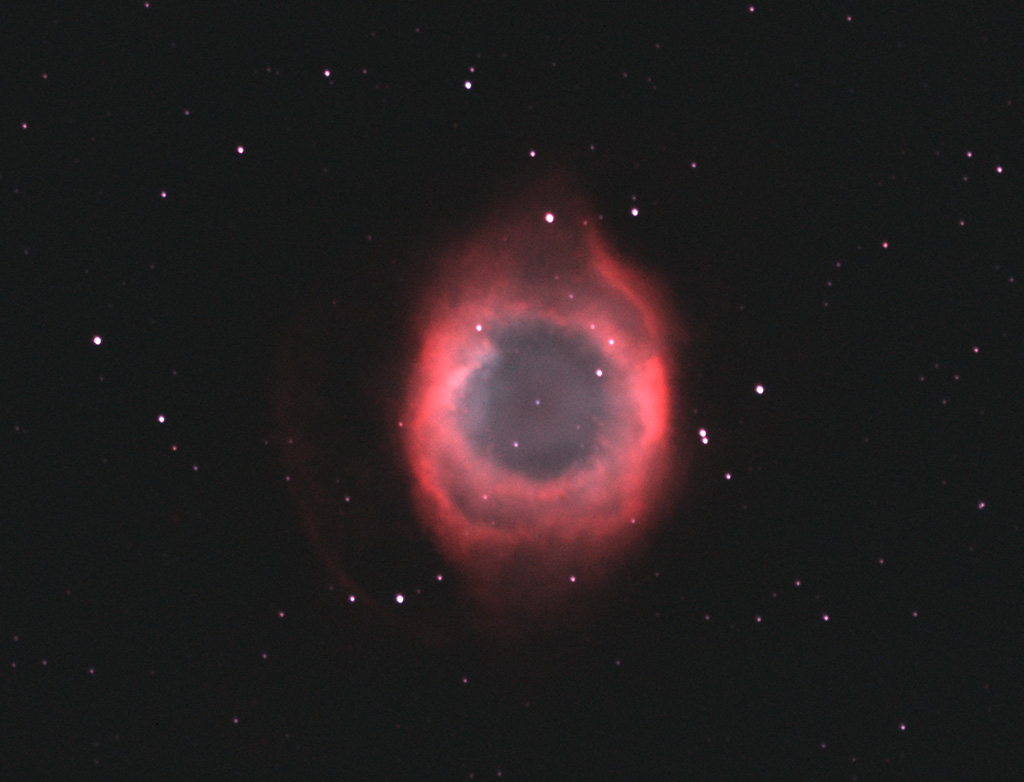
This image of the Helix nebula has been constructed from narrow band exposures taken over seven nights in September 2003. Based on flux data from the Innsbruck Data Base of Galactic Planetary Nebulae I wanted to make a tri-color exposure in H-alpha, OIII and H-beta. The flux and camera sensitivity values implied that the longest expsoure time should be on the H-beta channel; which I faithfully integrated for a total of 9.5 hours! However, when analyzing the data I found the H-beta nebula flux to be just ~1/50 of the sky background, which is simply too weak to show up as a nice image with any reasonable S/N ratio. This is in disagreement with the data from the Innsbruck database which states that the H-beta flux is roughly half of the H-alpha flux (I get a ratio of just 1/300, I wonder if something is wrong with my filter?). The H-beta data has been included in the final image nonetheless since it helped create more natural star colors.
Setup: Borg 100ED F6.4, DF-2 focusser, CFW-8 (H-alpha, OIII, H-beta), ST10XE, MaximDL/CCD, Takahashi EM-10 mount (here's how this setup looks).
The seeing was lousy (8-9 arcsec) and the refractor was slightly out of collimation.
Exposure time: H-alpha=12x600 sec, OIII=22x900 sec, H-beta=38x900 sec
Processing:
basics: dark subtracted, flat fielded, masked hot/cold pixels; corrected background using fitted 5th order polynomial (homemade software), registered, sigma-reject combined
(links to images of H-alpha, OIII, H-beta)
created r,g,b channels:
r = H-alpha
g = 0.5 x OIII
b = 0.5 x OIII + H-betacreated LRGB image by synthesizing L as R+G+B, despeckled R,G,B
In Photoshop:
unsharp mask (radius: 50 pixels, amount 50%)
grain surgery noise reduction => image above
grain surgery noise reduction
slight modification of levels&curves => image belowboth images reduced 15% for web publishing (it also hides the sharpness problem a bit!)

Here's my main page where you can see more of the pictures I have taken so far.
Comments greatly appreciated! (mikael@leif.org)